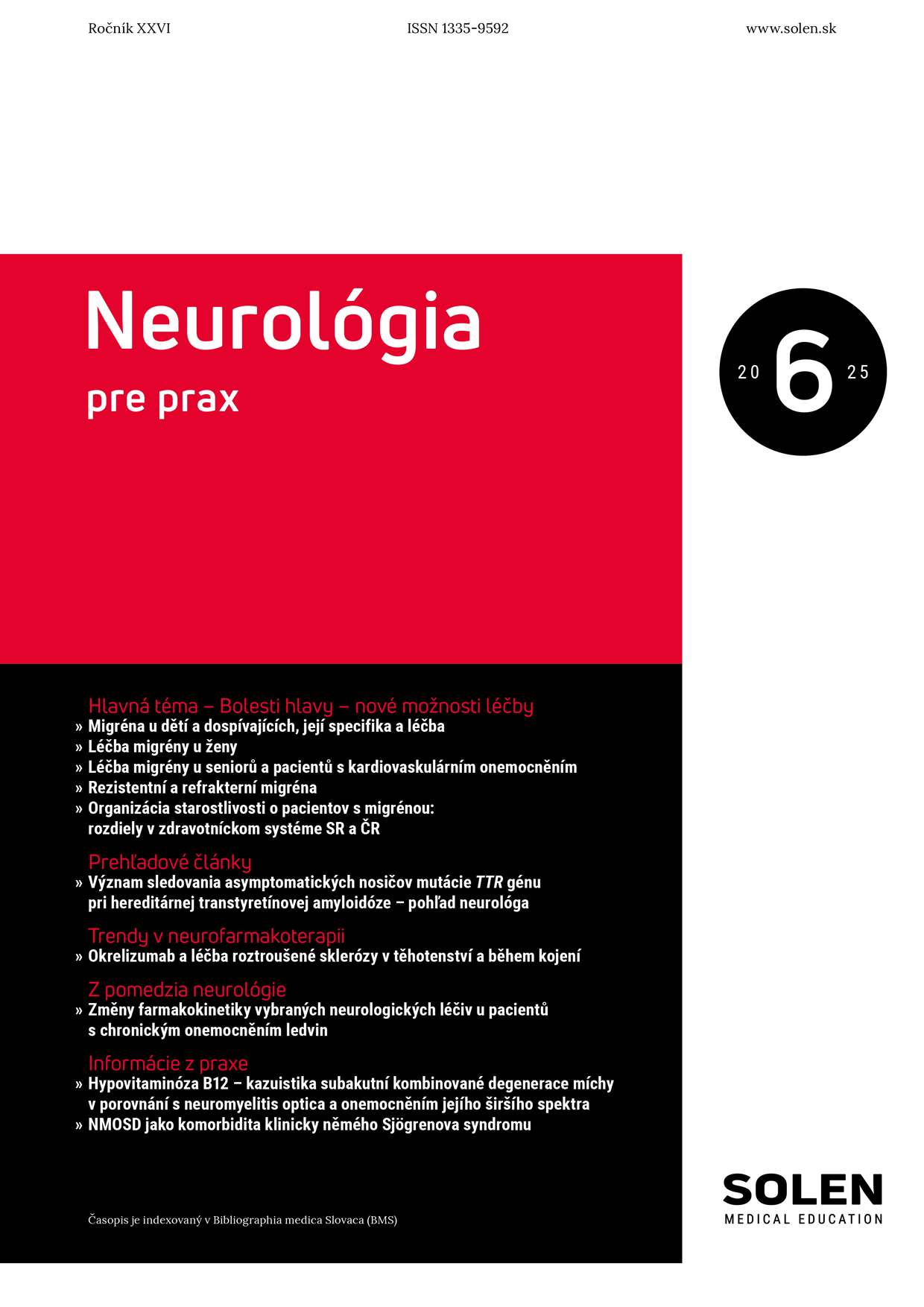Via practica 3/2016
Possibilities for early detection of patients with the diagnosis of MS in general practitioner
Multiple sclerosis can be defined as a chronic inflammatory demyelinating disease of the central nervous system. The incidence of multiple sclerosis in recent years has increased significantly. Credit for increasing the number of newly diagnosed cases is not only because of sophisticated investigative techniques (especially brain imaging MRI), but also of an increased awareness of the disease in the medical profession. Multiple sclerosis is considered to be an autoimmune disease that results from the failure of the immune system of the patient that is induced by still unknown specific cause. Multiple sclerosis is the subject of every year unceasing research, which is focused mainly on understanding the immune processes leading to the development of the disease. Currently, we have a fairly wide range of disease-modifying drugs (DMD) with different mechanisms of action and different efficiencies. They provide more opportunities how to influence or in some cases completely stop the progression of the disease. Article provides a brief insight into the various forms of the disease, the most common clinical signs and actual possibilities for diagnosis and treatment.
Keywords: multiple sclerosis, magnetic resonance, relapse-remitting multiple sclerosis therapy, DMD

















